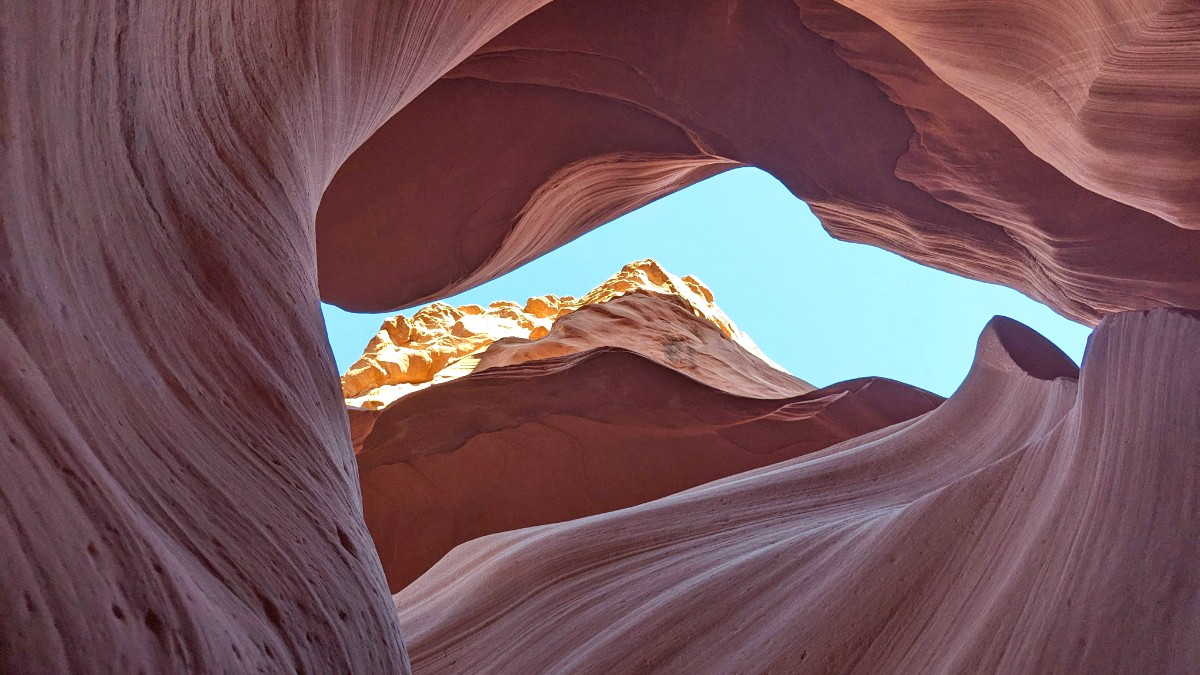
Arizona, USA
It is not merely a geological formation; it is a living gallery where light, shadow, and color combine to create an ever-changing spectacle. Every turn in the winding passages presents a new perspective, a different shade, a fresh play of illumination. The canyon invites visitors to immerse themselves in its silent, monumental beauty. Here, the passage of time is visible in the smooth, wave-like contours of the sandstone. This natural cathedral calls to photographers and nature lovers alike, promising images and memories that continue. You will discover why this place is a position among the world's most photographed natural wonders. Prepare your senses for an encounter with art on a scale only nature can create.
Antelope Canyon sits on Navajo Nation land, positioned just east of Page, Arizona, in the American Southwest. This location places it within the vast, arid landscapes of the Colorado Plateau, a region renowned for its dramatic geology. The canyon itself is a slot canyon, a narrow gorge formed by the wearing action of water running through rock.
The canyon's formation is a testament to the power of flash floods and wind erosion. Over countless millennia, seasonal rains rushed through the sandstone, carrying abrasive sand and debris. This persistent natural force gradually sculpted the rock into the smooth, flowing shapes seen today. Wind also had a role, polishing the surfaces. The result is a series of narrow, deep crevasses, often less than 10 feet wide at the top, but stretching hundreds of feet deep.
Meaning "the place where water runs through rocks" in Navajo, this section is a short, walk-in canyon. Its floor is mostly flat and sandy, making it generally easier to navigate. Upper Antelope Canyon is famous for its direct beams of light that penetrate from openings overhead, especially visible during mid-day hours from late spring to early fall. Tour vehicles transport visitors from a meeting point to the canyon entrance, then guides lead the walk through the main chamber.
Known as "spiral rock arches," this section is narrower and a physically engaging experience. Visitors descend into the canyon via a series of steep ladders and stairs. The passages are more winding and feature a distinct V-shape, allowing for interesting light patterns.
"carbonated rock arches"
An alternative, often less crowded, experience.
Two distinct slot canyons.
Some stairs and uneven ground.
A middle ground between the ease of Upper and the adventure of Lower.
Antelope Canyon is conveniently located near other distinguished attractions in the Page area. Horseshoe Bend, a dramatic U-shaped bend of the Colorado River, lies approximately 10 miles from Page and a short drive from the canyon access points.
A vast reservoir offering numerous recreational activities, borders Page, with major marinas like Wahweap and Antelope Point just a few miles away.
The city of Page, the main gateway for canyon visits, is located at approximately 36.9143° N latitude and 111.4552° W longitude, at an elevation of about 4,300 feet (1,310 meters) above sea level.
This proximity makes it practical for visitors to combine a trip to the canyon with exploration of these other natural landmarks.
Antelope Canyon holds deep and lasting significance for the Navajo people. For centuries, this natural formation was a sacred place, recognized by the Navajo (Diné) as a site of spiritual importance and natural wonder. Navajo tradition teaches reverence for the land, and the canyon was viewed as a place of healing and worship.
The flowing sandstone walls and the light that filters through its narrow openings are seen as manifestations of the Creator's power. It was a place for spiritual reflection and traditional ceremonies. The canyon's formation, carved by water, also symbolizes nature's relentless power and cyclical processes within Navajo cosmology.
A place of healing and worship for the Navajo (Diné) people.
The largest Native American reservation in the United States.
Families used the canyon for shelter and passage.
The canyon remained relatively unknown to the outside world until the late 20th century. Its popularity grew rapidly with digital photography, which allowed visitors to capture and share its striking beauty. As interest surged, the Navajo Nation recognized the need to manage tourism to protect the fragile environment and visitor safety. In 1997, the Navajo Parks and Recreation Department closed independent access to the canyon.